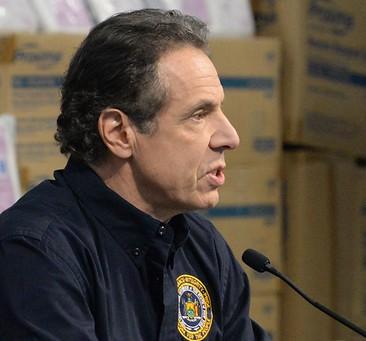As the US total of COVID-19 cases reached 571,694, including 23,036 deaths, six East Coast governors announced a new partnership to reopen their states' economies safely in the following weeks and months.
New York's Andrew Cuomo, New Jersey's Phil Murphy, Connecticut's Ned Lamont, Pennsylvania's Tom Wolf, Delaware's John Carney, and Rhode Island's Gina Raimondo said their six states were interconnected in terms of commuters and commerce, so a regional reopening made the most sense.
According to CNN, each state will name a public health official and an economic official to the group, and each governor's chief of staff will also be in the group.
Cuomo announced the partnership during a conference call from his daily briefing in Albany.
"We are in a situation that never has occurred before," he later tweeted. "Reopening the economy is a delicate balance. The objective is to ease isolation & increase economic activity without increasing the infection rate."
Western States Pact
On the West Coast, the governors of California, Oregon and Washington, which have seen flatter curves than first anticipated, also announced Monday a Western States Pact to plan for reopening.
"Health outcomes and science – not politics - will guide these decisions. Modifications to our states’ stay at home orders must be made based off our understanding of the total health impacts of COVID-19," said a joint statement announcing the Western States Pact. "This effort will be guided by data. We need to see a decline in the rate of spread of the virus before large-scale reopening, and we will be working in coordination to identify the best metrics to guide this.”
On Twitter today, President Donald Trump said it would be up to the White House, and not governors, to decide when to reopen the economy.
"With that being said, the Administration and I are working closely with the Governors, and this will continue. A decision by me, in conjunction with the Governors and input from others, will be made shortly!" he tweeted.
New York logs more than 10,000 deaths
New York is still the hardest-hit state, with 195,031 cases, and 10,056 deaths. Cuomo said today he believes the state has seen its peak total in deaths, as both fatality rates and hospitalization rates have flattened over the weekend. Yesterday, Easter Sunday, New York reported 671 deaths, down 100 to 150 deaths from last week's daily average.
New Jersey has the second-highest numbers, with 64,584 cases and 2,443 deaths.
Over the last few days, either Massachusetts and Michigan have had the third-most cases in the country. As of today, Michigan has 25,635 cases and 1,602 deaths, and Massachusetts has 26,867 cases and 844 deaths.
Grocery, pharmacy worker infections rise
Both the Washington Post and ProPublica report that essential workers, including grocery and pharmacy employees, are contracting COVID-19 but are increasingly unable to stop working in this economy. Grocery stores and employees have been deemed essential workers during the pandemic
So far, 41 grocery workers have died from COVID-19 infections, the Washington Post said, and at least 1,500 have tested positive. Pharmacy workers told ProPublica that stores have offered little in the way of protective gear during the outbreak, and getting sick with the virus expends their paid sick leave.
CDC tracks 4 cities' efforts at social distancing
Today in the Centers of Disease Control and Prevention's Morbidity and Mortality Weekly Report, researchers present data on four cities and the timing of social distancing and community mitigation efforts on reported resident mobility. The research comes from data collected from San Francisco, Seattle, New Orleans, and New York City from Feb 26 through Apr 1.
On Feb 26, about 80% of residents in those cities reported leaving home regularly. By Apr 1, that percentage dropped to 42% in New York City, 47% in San Francisco, 52% in Seattle, and 61% in New Orleans.
The CDC found declines in mobility occurred only after implementation of a combination of policies—such as limits on gatherings or school closures—and after the White House's 15 Days to Slow the Spread guidelines were implemented on Mar 16. Initial, local emergency declarations did not slow mobility, nor did statewide stay-at-home orders.






















